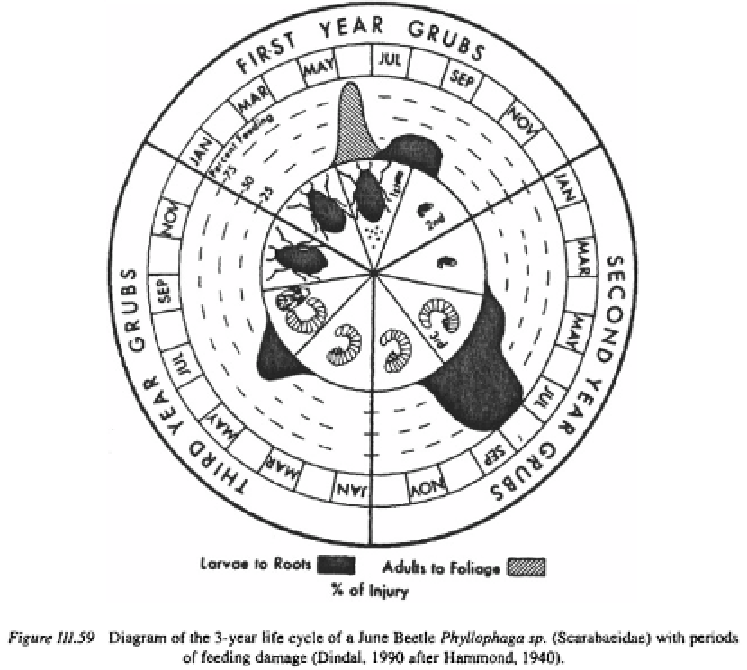Agriculture Reference
In-Depth Information
Curculionidae, Elateridae and Tenebrionidae.
The vast majority of Scarabaeidae have three larval instars and they complete their life
cycle in 1 to 4 years. The European cockchafer (
Melolontha melolontha
), which used to be
a common pest has a three-year life cycle: adults merge during spring (April)
and lay eggs in the soil during the following 2-3 months before they die. The incubation
period of eggs lasts about six weeks. The first larval instar lasts 2 months and the first moult
takes place at the end of summer (September). The second instar larvae hibernate and resume
devastating activity during the next spring. This is the time when the most severe damage
occurs. The second moult takes place in June-July. Third instar larvae hibernate and further
develop during spring up to metamorphosis which starts in June and finishes in October when
adults hatch out and hibernate in soil before emerging in spring (Hurpin, 1962). An average 5
t (
i.e.,
20 %) decrease in sugar beet production occurred in France between 1925 and
1950 when one-year larvae were present in soils.
Beetles of the genus
Phyllophaga,
which may build up large populations in pastures of
North America and tropical Mexico, usually complete their life cycle in 2-4 years (Tashiro,
1990; Villalobos, 1991) (Figure III.59).


